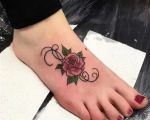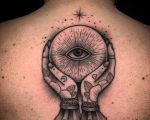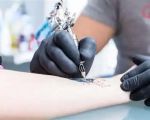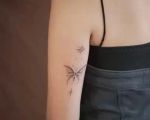
Exploring Tattoo Studios for Cultural Tattoo Styles
As someone who has always had an appreciation for art in its many forms, I’ve found that tattoos are an incredible way to express personal identity, cultural heritage, and creativity. Over the years, I’ve become particularly fascinated by cultural tattoo styles. These tattoos hold deep meanings and rich histories, making them not only visually striking but also symbolically significant. If you're looking to get a tattoo that represents a particular culture or heritage, you’re in luck. The United States boasts some amazing tattoo studios specializing in cultural tattoo styles, each bringing a unique level of artistry and tradition.
The Significance of Cultural Tattoo Styles
When I first considered getting a cultural tattoo, I didn’t fully realize how meaningful these designs could be. Cultural tattoos are more than just ink on skin – they’re steeped in history and tradition. Each style tells a story, often passed down through generations, and can symbolize everything from family lineage to spiritual beliefs. For example, Polynesian tattoos are not just decorative; they represent a person’s journey, achievements, and the bond with their ancestors. Japanese tattoos, known for their bold lines and vibrant colors, often depict mythical creatures like dragons and koi fish, which are said to bring good fortune and protection.
One of the most compelling reasons to choose a cultural tattoo is the opportunity to connect with a rich history. Many cultures around the world have used tattoos as a form of storytelling, whether to mark rites of passage, denote social status, or honor the gods. These tattoos are not just beautiful; they have deep personal and cultural significance. This is why it’s crucial to find the right tattoo studio that not only specializes in these styles but also respects the origins and meanings behind them.
How to Find the Right Tattoo Studio for Cultural Tattoos
1. Research the Studio’s Experience and Specialization
One of the first things I learned when researching tattoo studios was that not all tattoo artists are experienced in cultural designs. Cultural tattoos require a deep understanding of the symbolism and tradition behind the art. It’s essential to choose a studio where the artists are not only skilled but also knowledgeable about the particular cultural style you’re interested in. I suggest looking for a studio that has a portfolio showcasing their work in cultural tattoo styles, whether it's Native American, Celtic, Japanese, or African tribal tattoos.
2. Understand the Meaning Behind the Tattoo
When I got my first cultural tattoo, I took the time to really understand the symbolism behind the design I chose. For example, in Maori culture, the moko (facial tattoo) is an important symbol of one’s genealogy and identity. Before visiting a tattoo studio, I highly recommend doing some research on the cultural significance of the tattoo style you’re interested in. A good tattoo artist will take the time to explain the meaning behind the designs and make sure that you’re comfortable with its cultural roots. It’s also important to respect the traditions associated with certain tattoos, as some cultures view these designs as sacred.
3. Look for Studios with Certified Artists
As tattoos become more mainstream, it’s essential to seek out tattoo studios with certified artists, particularly when it comes to cultural tattoos. This is especially important because cultural tattoos require precision and attention to detail, and a certified artist will understand the importance of these designs. I made sure to choose a studio with professional certifications and a strong reputation for quality work, which is something that should always be at the forefront when choosing a place for your tattoo.
Popular Cultural Tattoo Styles in the US
1. Polynesian Tattoos: A Deep Connection to Ancestry
Polynesian tattoos are some of the most recognizable cultural tattoos in the world. They are often seen as a spiritual expression of one’s personal journey and connection to their ancestors. When I got my first Polynesian tattoo, I chose a design that represented strength, protection, and the bond between family and heritage. These tattoos are known for their intricate patterns and bold lines, which create a sense of movement and fluidity. The art form dates back thousands of years and is still practiced today in various parts of the Pacific Islands.
2. Japanese Tattoos: Bold, Symbolic, and Rich in Tradition
Japanese tattoos have a rich history that spans centuries, with many of the designs reflecting deep spiritual and cultural meanings. Whether it's the mythical dragon, the koi fish, or the samurai, each symbol has its own significance. I’ve always admired the elegance and boldness of Japanese tattoos, particularly the way they cover large portions of the body, creating a masterpiece that flows from one part of the body to the next. Japanese tattoos are traditionally done using a hand-poking technique, which gives them a distinct texture that many enthusiasts, including myself, find appealing.
3. Native American Tattoos: Representing Nature and Spirituality
Native American tattoos are deeply tied to nature, animals, and spirituality. These tattoos often symbolize a connection to the earth, the elements, and the spirit world. I’ve always been drawn to the beauty of these tattoos, particularly those featuring wolves, eagles, and bears. These animals are often seen as spirit guides and protectors, and the tattoos are meant to honor these creatures. When I was looking for a studio to get my Native American tattoo, I specifically sought out artists who were familiar with the cultural significance of these designs.
What to Expect During the Tattoo Process
1. Consultation with the Artist
Before getting your tattoo, it’s important to have a consultation with the artist. This is your chance to discuss your design ideas, learn about the meaning behind the tattoo, and ensure that the artist understands your vision. During my consultation, I was able to ask questions, get feedback, and make sure that the tattoo would be a true representation of the cultural style I was drawn to.
2. The Tattooing Process
Once you’re ready to proceed with the tattoo, the artist will begin the tattooing process. Depending on the size and complexity of the design, this could take a few hours or even multiple sessions. For cultural tattoos, precision is key, and the artist will work carefully to ensure every detail is perfect. I remember feeling a sense of calm as the needle moved across my skin, knowing that I was receiving a piece of art that would stay with me forever.
3. Aftercare for Cultural Tattoos
Taking care of your cultural tattoo is essential for ensuring it heals properly and retains its beauty. Aftercare instructions typically involve keeping the tattoo clean, moisturized, and out of direct sunlight. Following the proper aftercare instructions helped me avoid infections and preserve the tattoo’s sharp lines and vibrant colors.








